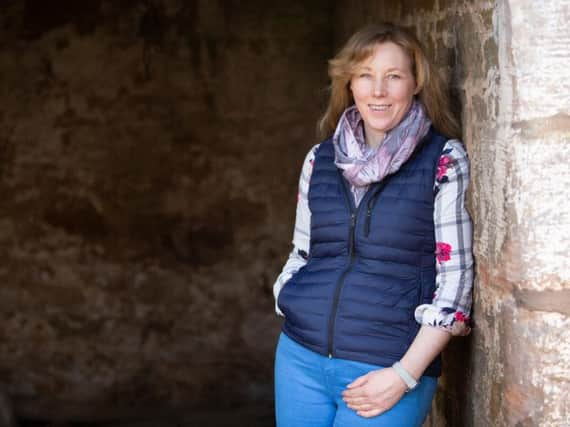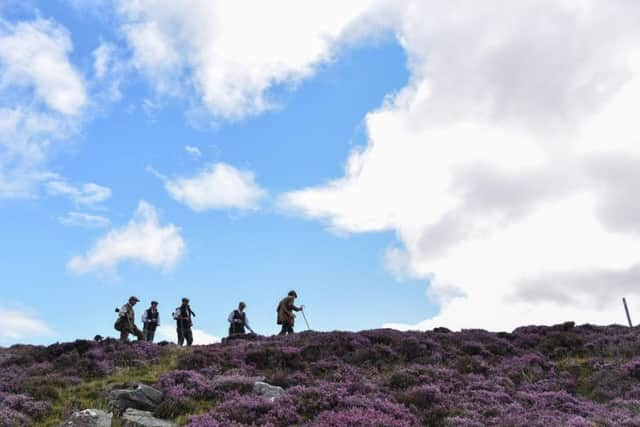'Our uplands need evolution not revolution', says Heather Trust chief
This article contains affiliate links. We may earn a small commission on items purchased through this article, but that does not affect our editorial judgement.


So said the director of The Heather Trust, Anne Gray, whose organisation is bringing people together to counter misunderstandings about moorland management amid a storm of pressures that threaten the sustainability of life in the hills.
There have never been more demands placed upon the uplands, the trust said, with calls increasing to deliver renewable energy, more trees, a wilder environment and better water management.
Advertisement
Hide AdAdvertisement
Hide AdThere are pressures too, to improve biodiversity, lock in more carbon and more effectively manage the risk of wildfires, with the value of traditional land uses – grazing and grouse moor management in particular – called into question.


An increasingly polarised debate about land use is making upland farmers feel threatened, warned Ms Gray, who said she feared rash changes could cause upland incomes to fall “off a cliff edge”.
“There are pressures on farming and grouse moor management, and pressure because of the need to respond to climate change,” she said.
“There’s no doubt there will need to be change but it would be good to see that as an evolution.”
Advertisement
Hide AdAdvertisement
Hide AdShe said future government policy needs careful consideration if upland communities are to avoid being forced to “retreat”.
Advertisement
Hide AdAdvertisement
Hide Ad“We don’t want to flip-flop between one policy or another,” she said. “There is a lot of pressure and I think upland communities need support to respond to these pressures.”
With upland land use a hot topic on social media, The Heather Trust is holding a series of debates to challenge misconceptions about existing practices and explore future options.
Speaking to The Yorkshire Post ahead of one such sell-out event in Goathland in the North York Moors on Friday, Ms Gray said: “There are so many different views and opinions about what our uplands should be used for and I think it’s important that we get people together to discuss that.
“On social media, discussion gets really polarised. If we get people together in a room or, even better, on a moor, the discussion is much more sensible, pragmatic and there is a right of response and people get the chance to get into the details of why land uses are what they are.”
Advertisement
Hide AdAdvertisement
Hide AdShe said a combination of grazing, heather burning and cutting prevents moorlands “returning to scrub” and interfering with that “toolbox” would have consequences.
“If we want to continue managing the uplands, but not with grouse management or if farming becomes more difficult and people retreat from the uplands, then how do we protect the uplands and value of them?” she said.
“It’s not that we might not want to change livestock types or stocking levels or move forward with the question of burning or cutting, but we have to think about how that affects incomes in the uplands.”
Advertisement
Hide AdAdvertisement
Hide AdSome environmentalists champion “rewilding” in the uplands to boost biodiversity, while the same landscapes have been mooted for planting trees to absorb emissions, slow the flow downhill of potential flood water and provide alternative incomes from forestry.
But Ms Gray said neither approach must come at the expense of the gradual process of repairing damaged peatlands.
“If we don’t maintain moorland areas we will get successions of trees before we restore blanket bog and take advantage of its carbon storage,” she said.
“Moorland owners should be able to choose what they want to do with their land as long as it complies with law and if they want to go down the rewilding route, they should be able to.
Advertisement
Hide AdAdvertisement
Hide Ad“But they need to be informed by a strategic overview of how land is used in a particular area, because one land use choice in one area has an impact on another area,” Ms Gray said.
“We do want to see a mix of land uses but if we want to maintain moorland in some shape or form, because we value that as a land use... if it is fragmented it will be on a path to disappearing altogether.”
Another organisation, the Uplands Alliance, recently held regional meetings to bring together hill farmers and officials from the Department for Environment, Food and Rural Affairs.
Julia Aglionby, of the Foundation for Common Land, said the meetings were used to discuss how farmers could enjoy bright futures for their businesses while delivering for the environment.
Advertisement
Hide AdAdvertisement
Hide AdOne of the group’s recommendations is for payment schemes of up to 25 years to allow farms to properly plan and deliver environmental benefits.
Future-proofed?
Upland landscapes are the best possible places to deliver benefits under a proposed new Environmental Land Management farm payments scheme post-Brexit, said Anne Gray of The Heather Trust.
“The uplands are the best places, if we are thinking about the delivery of public goods, water management, carbon storage and biodiversity,” she said, adding that a new scheme must be carefully managed to protect farm incomes.
“People need the opportunity to adjust and change in a sensible way that doesn’t, in the short term, force them off a cliff edge financially.”